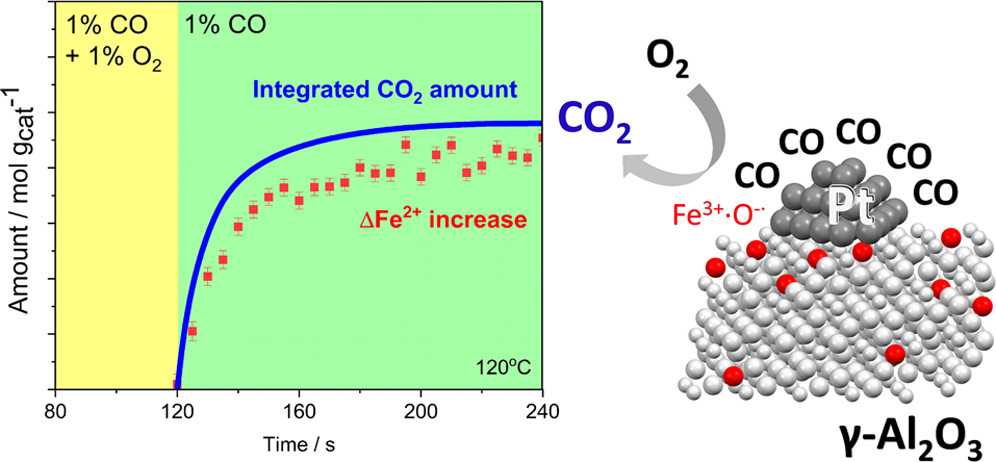Operando X-ray spectroscopy revealed the key role of the Pt-FeOx catalytic interface in preferential CO oxidation
Preferential carbon monoxide oxidation (PROX) is of great importance for the implementation of hydrogen-based fuel cells and other modern hydrogen-based energy systems.1 Catalysts required for this reaction must purify hydrogen fuel from traces of poisonous carbon monoxide, which is able to completely deactivate the fuel cell anode.2 The main difficulty lies in a relatively low temperature of a fuel cell operation. PROX catalyst must oxidize carbon monoxide using molecular oxygen from air close to ambient temperature. Pt-FeOx catalysts show one of the highest PROX activities at ambient temperatures with 100% selectivity towards oxidation of carbon monoxide.3 At the same time, commercial implementation of PROX Pt-FeOx catalysts is strongly limited due to their fast deactivation.4 The reason for this deactivation process is unclear since no clear explanation for the reaction mechanism has been proposed.
To uncover the mechanism of preferential CO oxidation over Pt-FeOx catalysts, we used operando X-ray absorption spectroscopy that can quantitatively probe the redox activity of iron and platinum under in situ and operando conditions. Operando XAS at the Fe K and Pt L3-edges identified that pretreatment conditions determine the structure of iron and platinum sites and their steady-state conversion. A quantitative comparison of operando structural change, obtained with time-resolved XAS spectroscopy, with catalytic rates revealed that the Fe2+/Fe3+ redox pair is directly involved in the catalytic cycle of carbon monoxide oxidation as shown in figure below.5 Two different reaction mechanisms of this reaction at 100oC and at ambient temperatures were established. We have also determined the prerequisites for the Pt-FeOx catalyst deactivation and the role of Pt-FeOx interface in the preferential CO oxidation at ambient temperatures.

[1] V. F. Valdés-López, T. Mason, P. R. Shearing, D. J. L. Brett, Progr. in Energ. and Comb. Sci. 2020, 79, 100842.
[2] P. Jing, X. Gong, B. Liu, J. Zhang, Catal. Sci. Technol. 2020, 10, 919-934.
[3] G. Liu, A. G. Walsh, P. Zhang, J. Phys. Chem. Lett. 2020, 11, 2219-2229.
[4] A. Sirijaruphan, J. G. Goodwin, R. W. Rice, J. Catal. 2004, 224, 304-313.
[5] I. I. Sadykov, M. Zabilskiy, A. H. Clark, F. Krumeich, V. Sushkevich, J. A. van Bokhoven, M. Nachtegaal, O. V. Safonova, ACS Catal. 2021, 11, 11793-11805.